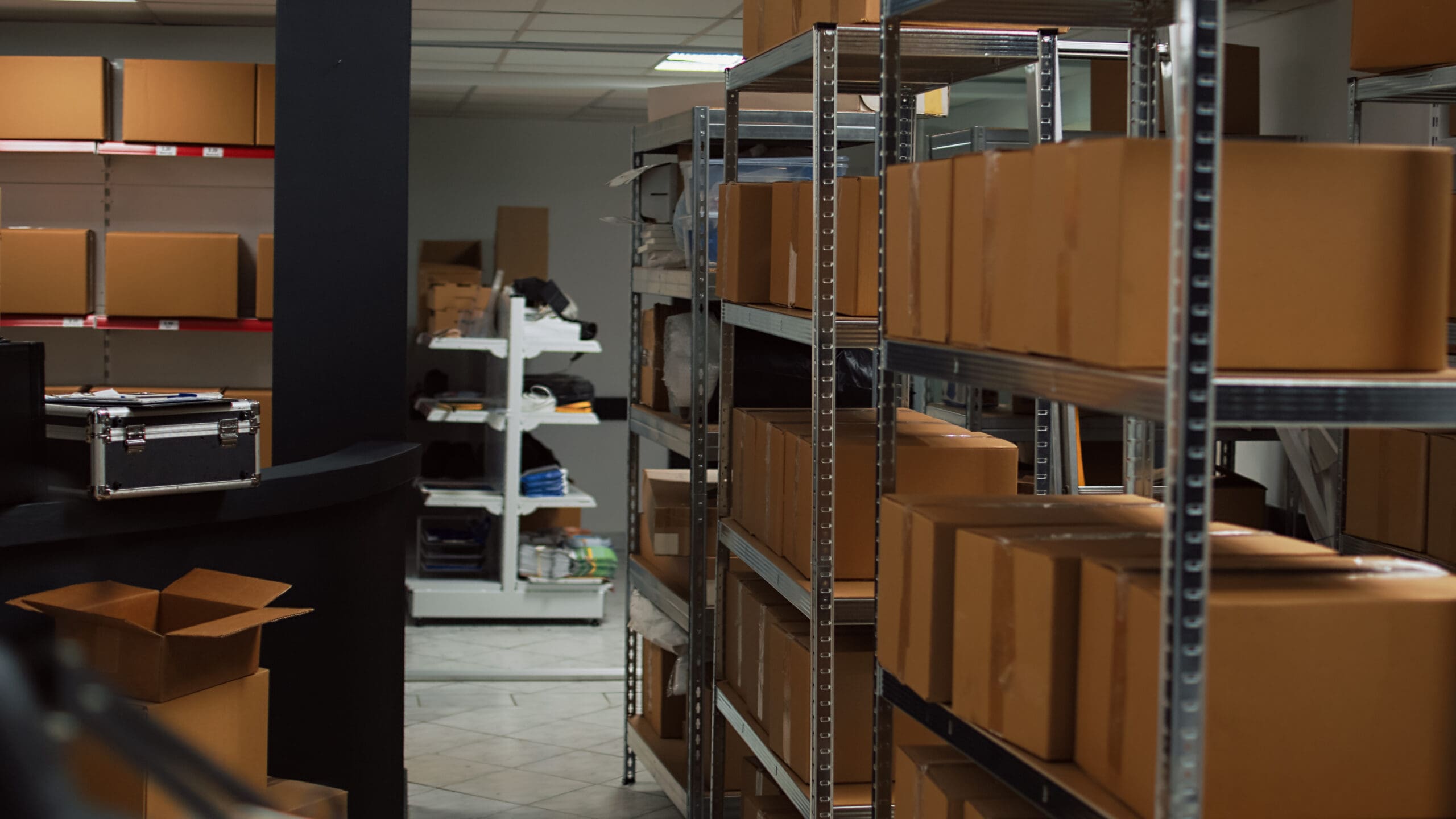What is inventory management?
Inventory management is the process of monitoring the flow of your inventory and determining how much stock to order at any given time. It streamlines order fulfillment by keeping track of your stock from the moment it arrives at your holding facility until it has been shipped to a customer. From organizing your inventory to meeting customer demand, inventory management plays a significant role in most, if not all, of your business operations.
Why is inventory management important?
Let us be upfront, there’s no one-size-fits-all strategy when it comes to inventory management. Your inventory management strategy should depend on your business model, sourcing method, and fulfillment system. If you fail to handle your stock successfully, it can lead to loss of profit and even business failure.
Having an effective inventory management system in place ensures that your business secures the right amount of stock in the right quantities. It also minimizes storage costs, improves cash flow, and guarantees customer satisfaction. While it may seem tedious, proper inventory management is a crucial process that affects almost every aspect of your business. Here are a couple of reasons why inventory management is important:
- Enhances inventory accuracy – Even the best inventory management system wouldn’t ensure 100% inventory accuracy. However, putting an effective inventory management strategy in place would help you meet demand by having the right products available whenever your customers need them.
- Avoids stockouts and excess stock – Maintaining optimum inventory levels, through inventory management, can easily be tracked by setting accurate reordering points for each of your products. Being unable to fulfill customer orders due to stockouts means you’ll most likely miss out on lucrative opportunities. It’s important to make sure that, when your stock levels are running low, your inventory management system would be able to immediately place a replenishment order to keep your inventory levels healthy.
- Improves cash flow – Whether it’s raw materials or finished goods, keeping an accurate stock record means you have a complete overview of how much cash you have tied up in your inventory. This lets you avoid ordering too much or too little of an item with cash that could be used on other business expenses.
- Boosts customer experience – It’s no secret that without repeat customers, a business would fail. With inventory tracking and stock control, you can keep your most popular products in stock during busy shopping seasons and keep your most loyal customers happy.
- Keeps inventory organized – Poor inventory management can lead to harmful implications that could hurt your business. One of the most important benefits of properly managing your inventory is that it simplifies supply chain management. This helps you optimize product reordering while also speeding up order fulfillment.
How can a business manage its inventory effectively?
Choosing the right inventory management system and techniques can help your business fully utilize your resources. Here are some tips on how to manage inventory effectively:
- Organize your data – Organizing your data ensures that there are no disconnects between fulfilled orders and available inventory. It lets you stay ahead of peak shopping seasons.
- Conduct regular audits – A very important reason to perform regular audits is to identify inventory issues. An audit can assist you in determining inventory issues before you end up with backorders. Regular audits are also an excellent way to make sure that your financial statements are accurate and up to date.
- Analyze reports – Analyzing multiple reports can be overwhelming. However, keeping track of your key performance indicators is an important task that you shouldn’t overlook. Most successful businesses monitor how well their operation is doing based on vital metrics. From analyzing your inventory turnover rate to setting a reordering point, analyzing your data will increase your sales, enhance customer satisfaction, and enable you to accurately predict customer demand.
- Maintain a good relationship with suppliers – As a business owner, your supplier will be your most important business partner. From sourcing raw materials to the production of goods, a reliable supplier consistently delivers quality products at the required time. The approach you take with your suppliers will impact the way they service your business so it’s only natural that you build and nurture a great professional relationship with them.
Top Inventory Management Techniques You Must Know
- Inventory Forecasting – Inventory forecasting is a method used to predict the amount of inventory needed to satisfy future consumer demand. Businesses that conduct proper inventory forecasting can make informed decisions about how much inventory they need at a time. This allows businesses to accurately manage their finances while also optimizing their inventory.
- Just-in-Time (JIT) Method – The JIT method is a type of inventory management system that improves efficiency and reduces waste associated with production. Under the JIT system of inventory management, products are produced only after an order is received. This helps companies cut costs by only purchasing materials as required rather than wasting large amounts of materials and products. However, one big downside to the JIT method is that it can leave you vulnerable to demand shock when you suddenly experience an increase in demand. This could lead to stockouts and the inability to meet demand.
- Safety Stock – As the name implies, safety stock refers to the extra inventory held by a business to reduce the risk of stockouts. Having the right amount of safety stock allows businesses to keep extra products on hand in case there is an unexpected increase in demand or a supplier fails to deliver items on time.
- Dropshipping – Dropshipping is an inventory management fulfillment method where businesses fulfill orders by passing the storing, packing, and shipping of products to a third-party supplier. This type of strategy enables businesses to save on overhead costs and move away from the traditional retail model. If you use this kind of inventory management model, expect to also save on recurring expenses such as utilities and storage fees.
- Cross-docking – Cross-docking is an inventory management system that minimizes the time your products spend in your warehouse. After arriving in your storage facility, goods are sorted and immediately loaded onto another truck based on their end destination. As opposed to dropshipping, businesses that use the cross-docking method will gain oversight over the shelf life of a certain product.
- ABC Analysis – ABC analysis is an inventory management strategy that categorizes inventory into three main categories:
-
- “A” items represent a business’s most valuable products. This category often includes products that heavily contribute to a company’s bottom line.
- Compared to “A” items, “B” items are made up of products that are of lesser value.
- “C” items typically represent the largest category of products that contribute the least to a company’s overall profits.
ABC analysis is a great categorization technique based on each product’s value. This enables businesses to determine which of the products to prioritize over the less valuable ones. It also gives businesses an idea which inventory items pose the biggest risk and which ones are the most profitable.
- Economic Order Quantity – Economic Order Quantity, or EOQ, is an inventory management system focused on maximizing a business’s profits. EOQ works based on a formula that identifies the ideal quantity of a particular item to ultimately minimize the total cost of production, holding, and other variables. However, as with all the inventory management techniques in this list, maintaining optimal inventory levels differ from one business to another. Make sure to evaluate the advantages and disadvantages of this inventory management model and determine if it fits your needs.
- Consignment Inventory – Consignment inventory is an inventory management arrangement where a vendor or a wholesaler provides a business with goods without paying upfront. In this business arrangement, the consignor (vendor/wholesaler) maintains ownership of the products, and the consignee (usually retailers) is only required to pay for the goods until after they are sold. Consignment inventory is usually used by retailers to test the viability of new products without putting their cash flow at risk. If you’re seriously considering consignment as a viable strategy for your business, you should check out Kickfurther. We’re an inventory financing platform that empowers businesses to scale and market their products with the aid of supporters and fans.
How can Kickfurther help your business?
Kickfurther is the world’s first online inventory financing platform that enables companies to access funds that they are unable to acquire through traditional sources. We connect brands to a community of eager buyers who help fund the inventory on consignment and give brands the flexibility to pay that back as they receive cash from their sales. This alleviates the cash-flow pinch that lenders can cause without customized repayment schedules allowing your brand to scale quickly without impeding your ability to maintain inventory.
Interested in inventory financing with Kickfurther? Apply today.









